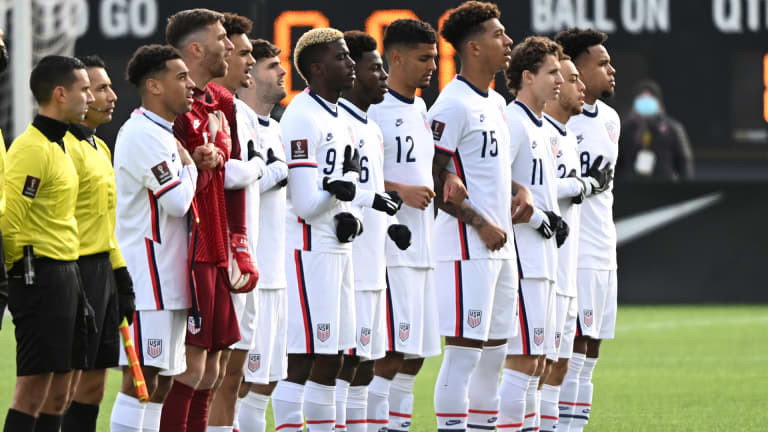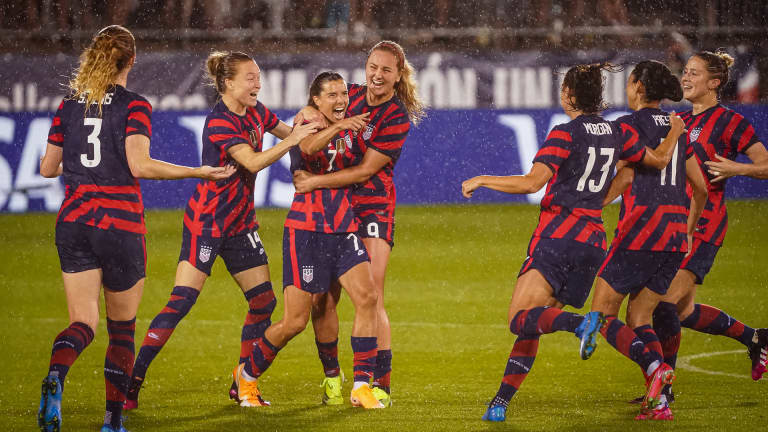The players' associations for the United States men’s and women’s national teams have agreed to historic collective bargaining agreements with U.S. Soccer regarding equal pay, the federation and unions announced Wednesday.
The CBAs, which run through 2028, have identical compensation for all competitions, including the FIFA World Cup, and the introduction of the same commercial revenue-sharing mechanism for both teams. U.S. Soccer is the first federation worldwide to equalize FIFA World Cup prize money across the men’s and women’s programs.
The CBAs also include updates to player health and safety, data privacy and the need to balance responsibilities to both club and country.
“This is a truly historic moment. These agreements have changed the game forever here in the United States and have the potential to change the game around the world,” U.S. Soccer president Cindy Parlow Cone said in a release. “U.S. Soccer and the USWNT and USMNT players have reset their relationship with these new agreements and are leading us forward to an incredibly exciting new phase of mutual growth and collaboration as we continue our mission to become the preeminent sport in the United States.”

Economic equality
National team players will share a portion of prize money paid for the teams’ participation in the 2022 Men’s World Cup (MWC) and the 2023 Women’s World Cup (WWC). The same will occur with the 2026 MWC and the 2027 MWC. A prize money split also applies to non-World Cup tournaments.
The ratification includes equal pay for friendly games and identical roster appearance fees and performance payments, based on the outcome of the match and the rank of the opponent, with identical tiering structures. Players not on the game roster will earn the equivalent of an appearance fee for their participation in a senior national team camp
For official competitions, including the World Cup, USWNT and USMNT players will earn identical game appearance fees. For official competitions other than the World Cup, USWNT and USMNT players will earn identical game bonuses.
Further, U.S. Soccer will share a portion of its broadcast, partner and sponsorship revenue with a 50/50 split of that share divided equally between the USWNT and USMNT. And U.S. Soccer will pay USWNT and USMNT players a share of the revenue from tickets sold at U.S. Soccer-controlled home matches and a bonus amount for those games that are sellouts.
“They said equal pay for men and women was not possible, but that did not stop us and we went ahead and achieved it,” said Nashville SC defender Walker Zimmerman, a member of the MNT’s players’ association’s leadership group. “We hope this will awaken others to the need for this type of change and will inspire FIFA and others around the world to move in the same direction.”

Benefits, playing/training environments
Additional benefits include child care during senior national team training camps and matches, and a 401(k) plan for all USWNT and USMNT players.
The CBAs also ensure equal quality of venues and field playing surfaces, hotel accommodations, staffing for camps and the number of charter flights. Terms regarding a safe work environment and scheduling predictability are also included.
"The accomplishments in this CBA are a testament to the incredible efforts of WNT players on and off the field,” said Portland Thorns defender and WNT players’ association president Becky Sauerbrunn. “The gains we have been able to achieve are both because of the strong foundation laid by the generations of WNT players that came before the current team and through our union’s recent collaboration with our counterparts at the USNSTPA and leadership at U.S. Soccer. We hope that this agreement and its historic achievements in not only providing for equal pay but also in improving the training and playing environment for national team players will similarly serve as the foundation for continued growth of women’s soccer both in the United States and abroad.”
The deals, which cover the next two World Cup Olympic cycles, now await the final approval of the settlement by the class members and the Court.












